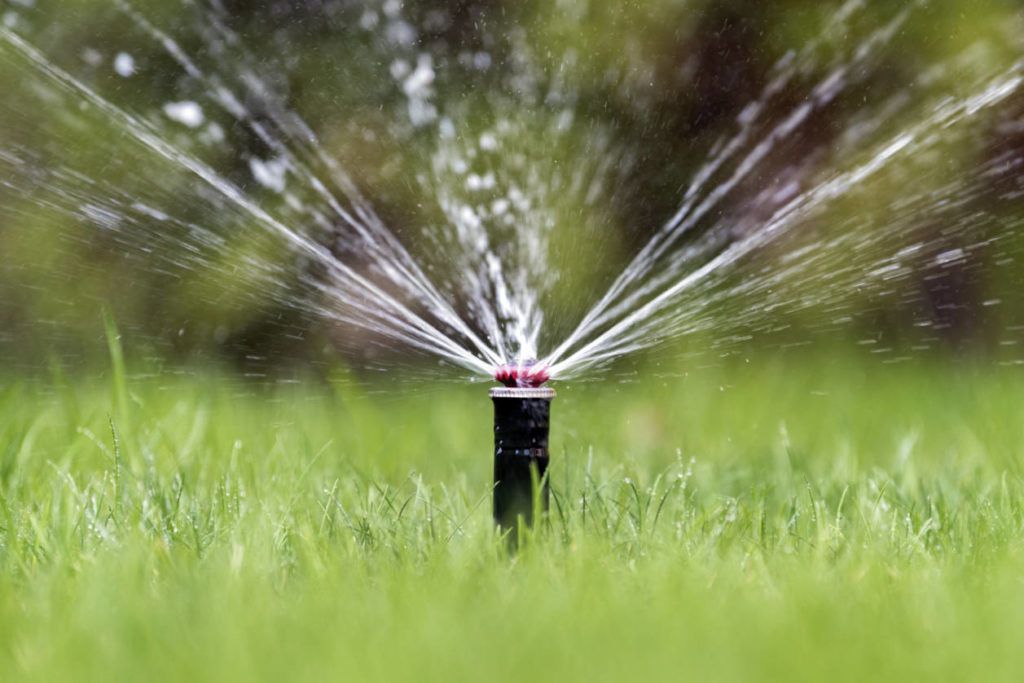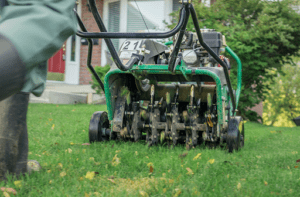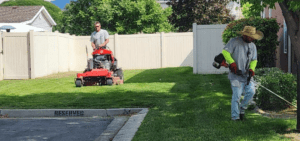We all like a green lawn here in Utah.
You’ve spent the spring getting your lawn prepared, you’ve raked, weeded and seeded and there is nothing worse than seeing all of your hard work turning brown, as the Salt Lake City temperatures soar.
So, what can you do to keep your lawn looking luscious and green despite the heat?
Irrigation is a great solution to keep your lawn healthy, happy, and green. Not only does it keep your lawn healthy, using an irrigation system correctly can conserve water, which is important and will ultimately save you money on your water bill.
Here at Millburn Lawn and Landscape, we know everything about irrigation, and we want to help, so here’s our guide designed to answer your irrigation questions and stop all of your hard work going to waste.
How long should the irrigation system be on?
Knowing how long your irrigation system needs to be running can be difficult. Afterall, you don’t want to underwater your lawn and you don’t want to overwater either.
Rather than measuring by time, measure by the amount of water.
When you irrigate you should put out half an inch of water. That is enough water to reach the ‘root zone’ which is the area of soil where most of the roots are. This may vary depending on your soil type.
So how long do you run your sprinklers to get half an inch of water?
This depends on the type of sprinkler head you have.
If you have Rotor heads, these are the ones which have one stream of water that moves back and forth, they will normally output 4-5 gallons per minute, per head.
If you have Spray heads, they will normally output .45 to .6 gallons per minute.
If you need to find out exactly how much your system puts out, you can do a catch cup test.
A catch cup test is where you stake a sprinkler measuring cup into the spray zone and turn your irrigation system on. After a set amount of time you can check the amount of water in the catch cup and this will help you determine how much water your system is putting out.
How often does the irrigation system need to be on?
How often you need to water your lawn can be complicated.
The reason it can be complicated is because it varies depending on the soil type and the weather.
There are many different soil types and they all have different surface areas. The surface areas can affect how well your soil absorbs water. The larger the surface area of the soil, the more the water clings to it rather than draining away.
Clay soil has a bigger surface area and decreased drainage, so it holds water for a longer period of time, whereas sandy soil drains quickly. Soils that are in between sandy and clay will also vary.
You don’t need to water every day.
Watering your lawn every day can be more harmful than good. Not only can it be wasteful, it stops your lawn developing deep root systems and encourages the growth of thatch. Both shallow roots and thatch can cause your lawn to dry up when it gets warm and make irrigation more difficult.
If you have been watering your lawn every day and it has developed shallow roots, it may take some time for your lawn to develop a deep root system.
Don’t drop straight to an infrequent watering schedule, taper it down slowly so your lawn can adapt and develop that all-important root system and become more drought tolerant.

Have a look at the chart below which outlines the average number of days you need between watering. This may vary depending on outside factors and soil type.
Do you need to adjust the irrigation timer?
The answer is yes. It might seem like a nightmare having to adjust your irrigation system every time it rains or when the temperature changes, but it does need to be done.
If you’re busy, or you just don’t have the time to be adjusting your system timer, consider investing in a Smart Controller.
The Smart Controller connects to the local weather stations and adjusts your system to suit the weather changes, so you don’t have to.
It’s a really handy device and means that you don’t have to constantly check for weather updates and manually adjust your system, saving you time and stress.
Irrigation is an individual process.
Remember, to keep an eye on your lawn. These are general guidelines and you should always consider that your lawn, soil and irrigation system are different. You may need to adjust your watering schedule to suit your lawn type and your soil type.
Check your Irrigation system regularly for damage, breaks and turned heads. Sometimes the brown spots on the lawn is because there is an issue with the irrigation system and not that the lawn needs more water.
If you’re still finding a couple of spots that don’t seem to be turning green, but the rest of your lawn is, water those areas individually, one or two times more a week, with a hose rather than running your irrigation system more frequently.
Do you still need help?
If you’re still not sure how to implement an effective irrigation schedule, and you want to have that stunning lawn all year round, we’re here to help.
Contact us today at Millburn Lawn and Landscape to find out what we can do to help you save water and keep your lawn green.




